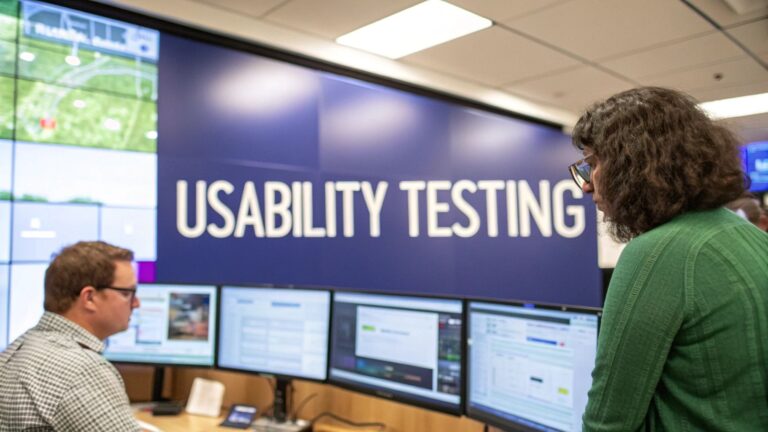Understanding Today's Leadership Landscape

Strong leadership has become essential for organizations to thrive and grow. As businesses face mounting pressures and rapid change, they need capable leaders who can guide teams toward ambitious goals. Yet many companies struggle to develop leaders with the right skills for today's challenges. This raises important questions about the current state of leadership and how organizations can better prepare their leaders for success.
The Leadership Gap: A Growing Concern
Recent research reveals a concerning reality – only 12% of leaders feel fully confident in mastering the five core leadership abilities they need: strategic thinking, managing change, making sound decisions, developing talent, and influencing others. For instance, when a growing tech company lacks strategic leadership, it often misses market opportunities and fails to adapt effectively. Making matters worse, just 29% of organizations invest in training these critical skills. This significant gap between required capabilities and current development efforts prevents many companies from achieving their potential.
Bridging the Gap: Smart Approaches to Leadership Development
Leading organizations understand that investing in leadership development pays off significantly. Leaders who master the five essential skills are twice as likely to prevent employee burnout and handle uncertain situations well. Even more impressively, these skilled leaders retain top performers at three times the normal rate. These results show how leadership development creates widespread benefits throughout an organization. However, fewer than 5% of companies have rolled out leadership programs across all levels – missing a major opportunity to strengthen their talent pipeline.
Assessing Your Leadership Position: Measuring What Matters
How do your leadership abilities compare to industry benchmarks? One telling metric is employee retention – 75% of workers who voluntarily leave cite poor leadership as their main reason for departing. On the flip side, inspiring leaders who motivate their teams reduce turnover by 14%. Leaders who openly acknowledge their limitations build 7.5 times more trust with their teams. This shows how authentic leadership creates an environment where people want to stay and contribute their best work.
Succession Planning: Growing Tomorrow's Leaders
Looking ahead, developing future leaders is crucial for long-term success. Yet only 12% of companies feel confident about their leadership pipeline in 2023 – down from 18% in 2018. This downward trend is concerning. Organizations with strong succession plans are six times better at engaging up-and-coming talent. This highlights why companies must actively identify and develop emerging leaders, not just focus on current ones. Creating a culture of continuous learning and growth at every level helps ensure smooth leadership transitions and sustained success.
Mastering the Core Skills That Define Great Leaders
Leadership skills are essential to success in any organization. Quality leadership can be the key factor that helps teams overcome challenges, seize opportunities, and achieve outstanding results. But what exactly makes an effective leader? Let's explore the fundamental skills that help leaders drive meaningful impact and examine how these capabilities directly contribute to organizational success.
Strategic Thinking: Charting a Course for Success
At its core, leadership requires the ability to set a clear direction through thoughtful strategy. Strong leaders analyze current conditions, spot emerging trends, and craft plans that align teams around common goals. For instance, an effective leader might study market signals to identify promising new product opportunities or develop backup plans to handle potential disruptions. Developing strategic thinking involves regularly practicing scenario planning, seeking diverse input, and staying current on industry developments. This foundation of strategic clarity helps teams understand not just what they're doing, but why it matters.
Change Management: Navigating the Shifting Tides
Change is constant in business, and skilled leaders help their teams adapt and grow through transitions. Clear communication sits at the heart of effective change management. Leaders must explain the rationale behind changes, address concerns openly, and build genuine support among team members. Just as important is providing the right resources and support to help teams master new processes or technologies. Leaders can strengthen these skills through focused training in communication, conflict resolution, and team resilience. The best change leaders create cultures where adaptation and improvement become natural parts of how teams work.
Decision-Making Under Pressure: Leading with Confidence
Leaders regularly face complex decisions with significant consequences and tight timelines. The ability to make sound choices under pressure is essential. Like a ship's captain steering through rough waters with limited visibility, leaders must weigh available information, assess options, and commit to decisions even with some uncertainty. Building this skill takes practice – leaders can improve through techniques like mindfulness training, mentoring relationships with experienced leaders, and simulated decision-making exercises that mirror real challenges. The goal is developing the clarity and confidence to make tough calls when teams need decisive direction.
Investing in Leadership Development: Reaping the Rewards
Companies that prioritize leadership development see concrete benefits across their organizations. Research shows businesses with strong leaders are twice as likely to keep their top performers compared to other companies. Teams with skilled leaders also tend to be more engaged and productive. When leaders have the right capabilities, organizations become better equipped to handle uncertainty, manage change effectively, and consistently hit strategic targets. This makes leadership development more than just training – it's a strategic investment that drives sustainable success. The key is approaching it systematically and measuring the impact over time.
Building Trust Through Authentic Leadership Practices

While leadership development is valuable, creating real trust within teams requires a more fundamental approach. Moving past basic skill-building to embrace authentic leadership leads to environments where open communication flourishes and teams feel truly empowered to do their best work.
Why Authenticity Matters in Leadership
Trust forms the bedrock of high-performing teams, and authentic leadership is key to building it. Research shows that when leaders openly acknowledge their limitations and show vulnerability, team trust levels increase by 5.3 times. This isn't about showing weakness – it's about being human. For instance, when a leader admits they don't have all the answers and actively seeks input, it demonstrates a genuine commitment to learning and collaboration. The data backs this up – leaders who maintain transparency about their shortcomings are 7.5 times more likely to keep their teams' trust over time. This openness creates psychological safety, which encourages creative thinking and calculated risk-taking.
Creating Psychological Safety: The Foundation of Trust
When team members feel safe to express thoughts and ideas without fear of backlash, real progress happens. This means building an environment where disagreement, questions, and even mistakes are seen as natural parts of growth. Consider a sports team where players stay quiet about potential issues because they fear the coach's reaction – that team will struggle to improve. But when open communication is the norm, teams can better identify weak spots, build on strengths, and adapt to new challenges. You might be interested in: How to master stakeholder feedback.
Fostering Open Dialogue: The Key to Effective Communication
Real dialogue goes beyond simple conversation – it requires active listening and building shared understanding. Leaders can encourage this by asking thoughtful questions, truly hearing responses, and making space for different viewpoints. This approach often reveals valuable insights and helps spot potential issues early. At the same time, leaders must balance honesty with judgment about timing and context for sensitive discussions.
Maintaining Authenticity While Navigating Challenges
Staying authentic during difficult times takes skill and careful thought. While it's tempting to maintain a polished image when things get tough, doing so can damage trust. Instead, focus on clear communication while considering the bigger picture. This might mean acknowledging current difficulties while outlining specific steps to address them. When leaders show genuine concern for their team's wellbeing, it helps keep people engaged even in hard times. Simple actions like regular check-ins during challenging periods show empathy and create chances for honest dialogue. This builds stronger connections and leads to a more supportive, productive workplace.
Strategic Communication: From Good to Exceptional
While authentic leadership builds trust, mastering strategic communication takes your leadership impact to the next level. Research shows leaders who excel at strategic communication achieve 33% better outcomes than their peers. This comes down to really understanding your audience, telling compelling stories, and adapting your approach based on the situation at hand.
Adapting Your Communication Style: A Multifaceted Approach
Just like how musicians adapt their style for different genres, skilled leaders know when to shift their communication approach. In one-on-one coaching conversations, the focus is personal – using active listening and thoughtful questions to help team members grow. For instance, you might ask exploratory questions that help someone identify their strengths and development areas.
But when announcing major changes to the whole organization, the approach needs to be different. Here, crystal-clear messaging and consistency are essential. Leaders must explain the "why" behind changes, get ahead of concerns proactively, and paint an inspiring picture of where the organization is headed. The emotional tone matters too – during uncertain times, showing genuine empathy and confidence helps maintain team morale.
Crafting Compelling Narratives: Inspiring Action and Driving Results
Facts alone rarely inspire people to take action. The most effective leaders use storytelling to connect emotionally and motivate their teams. Think about it – the most memorable marketing campaigns don't just list features, they tell stories that resonate on a deeper level. Leaders can use this same approach to communicate vision and strategy in a way that truly engages people.
Rather than simply stating quarterly goals, tell the story of how hitting those targets will create real positive impact for customers or advance the company's mission. This builds shared purpose and commitment. For more guidance on refining your messages, check out our guide on managing content review feedback.
Handling Challenging Communications: Navigating Difficult Conversations
Every leader faces tough conversations, whether delivering critical feedback, addressing team conflicts, or communicating hard decisions. Success in these moments comes from leading with empathy, being transparent, and focusing on solutions.
| Strategy | Description |
|---|---|
| Prepare and Plan | Anticipate potential reactions and plan your key message points in advance. |
| Choose the Right Setting | Opt for a private and neutral environment where individuals feel comfortable expressing themselves openly. |
| Active Listening | Focus on truly understanding the other person's perspective before responding. |
| Focus on Specific Behaviors | Frame feedback in terms of observable behaviors rather than making generalizations or personal attacks. |
| Collaborative Solutions | Work together to identify solutions that address the underlying issue and move forward constructively. |
| Follow Up | Reinforce key takeaways and ensure ongoing communication to maintain positive momentum. |
By developing these strategic communication capabilities, leaders can significantly boost their ability to guide teams, inspire action, and deliver outstanding results. It's through purposeful, skillful communication that leaders truly shape culture and drive success.
Developing Your Leadership Pipeline

When it comes to building strong organizations, succession planning is essential but often forgotten. By actively developing future leaders and ensuring smooth transitions of responsibility, companies protect their long-term success. Yet many organizations put themselves at a disadvantage by failing to invest in this critical area.
Identifying Emerging Leaders: Recognizing Potential
Finding promising leadership candidates requires looking beyond current job performance. The key is spotting traits like strategic thinking ability, willingness to tackle problems head-on, and natural talent for bringing out the best in others. For example, pay attention to employees who consistently step up to lead projects, suggest creative solutions, and excel at communicating with colleagues. These individuals often have the foundation needed to grow into effective leaders.
Creating Meaningful Development Opportunities: Nurturing Growth
After identifying high-potential employees, the next step is giving them chances to build their capabilities. This could mean connecting them with experienced mentors, providing focused training in areas like decision-making, or assigning challenging projects that push them to learn new skills. Research shows that companies with structured development programs are six times more likely to keep their rising stars. By investing in growth opportunities, organizations demonstrate their commitment while accelerating the development of future leaders.
Building Robust Succession Plans: Ensuring Continuity
A strong succession plan maps out key leadership roles and identifies multiple potential candidates for each position. This preparation helps minimize disruption during transitions while creating a framework for targeted development efforts. Regular reviews and updates ensure the plan stays current with business needs and individual progress. A well-designed succession strategy gives organizations an edge in attracting and retaining talent by showing a clear path for advancement. Most importantly, it protects the organization's future by building a deep bench of qualified leaders ready to step up when needed.
Implementing Leadership Excellence: Your Action Plan

Strong leadership makes the difference between a good team and a great one. By developing your coaching abilities and creating a culture of growth, you can help your team reach new heights of success. Let's explore how to put this into practice through focused skill-building and measurable results.
Developing Your Coaching Abilities: A Practical Approach
True coaching goes beyond giving directions – it's about guiding others to discover solutions for themselves. When you ask thought-provoking questions instead of providing quick answers, you help team members build problem-solving skills they can use again and again. For instance, rather than telling someone how to handle a challenge, try asking "What options have you considered?" or "What resources could help you tackle this?"
To strengthen your coaching skills, focus on:
- Active Listening: Give your full attention without interrupting, and work to truly understand others' perspectives
- Powerful Questioning: Use open-ended questions that spark reflection and new insights
- Constructive Feedback: Offer specific observations about behaviors and impact, not personal judgments
- Creating a Safe Space: Build trust so team members feel comfortable taking risks and asking for support
Fostering Team Growth: Creating a Culture of Development
Just as each person on your team has unique strengths and growth areas, they also need different types of support to thrive. The most effective leaders understand this and adapt their approach accordingly. Think of it like tending a garden – each plant needs the right combination of nutrients, water and sunlight to flourish.
Put this into practice through:
- Individual Development Plans: Work together to create clear goals and action steps for growth
- Regular Coaching Conversations: Schedule consistent one-on-ones to check progress and provide support
- Opportunities for Skill Development: Connect team members with training, mentoring and resources to build capabilities
- Delegation and Empowerment: Give challenging assignments that stretch abilities while providing adequate support. With only 12% of leaders feeling confident in developing talent, making this a priority sets you apart.
Measuring Leadership Effectiveness: Tracking Progress and Impact
Like any journey worth taking, developing leadership skills requires regular course corrections based on feedback and results. By tracking key metrics, you gain insights into what's working and what needs adjustment. This data helps you make informed decisions about where to focus your efforts.
Key areas to measure include:
- Team Performance: Goal achievement and work quality metrics
- Employee Engagement: Motivation levels and sense of feeling valued
- Retention Rates: Ability to keep top performers (especially important since 75% who leave cite poor leadership)
- Team Feedback: Regular input from team members about leadership effectiveness – BugSmash can help gather this feedback efficiently
Maintaining Momentum: Continuous Improvement and Growth
Growing as a leader is an ongoing journey, not a destination. By committing to regular self-reflection and staying open to feedback, you create lasting positive change. Think of it like physical fitness – consistent practice yields better results than sporadic intense efforts.
Stay on track by:
- Regular Self-Reflection: Setting aside time to assess your progress and identify growth areas
- Seeking Feedback: Actively asking colleagues and team members for input on your leadership
- Continuous Learning: Reading leadership books, attending workshops, and learning from others' experiences
Ready to improve how you gather and give feedback? BugSmash makes it simple to review and comment on various media files, helping teams communicate more effectively. Try it today to experience smoother collaboration!




